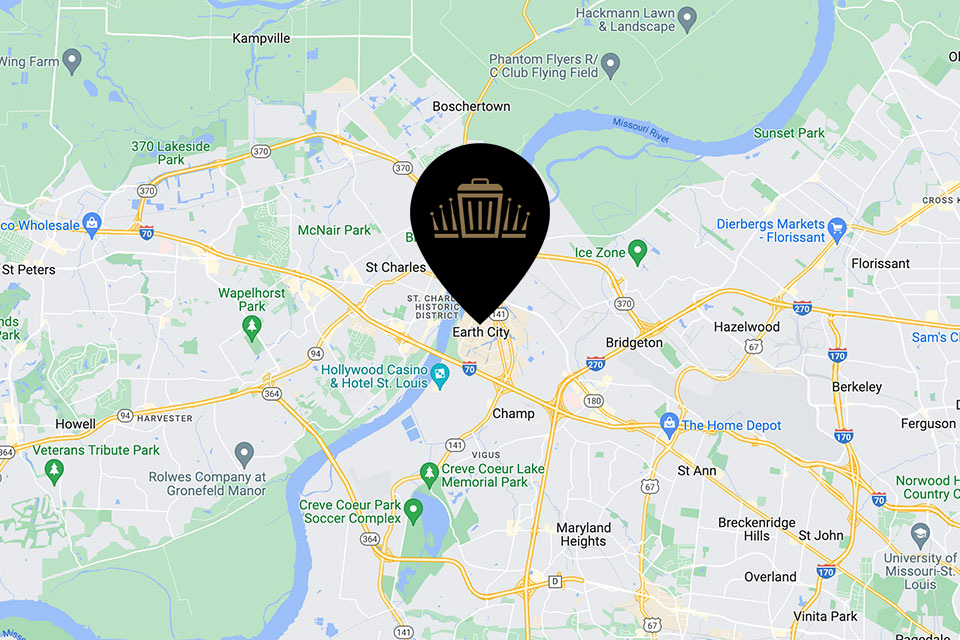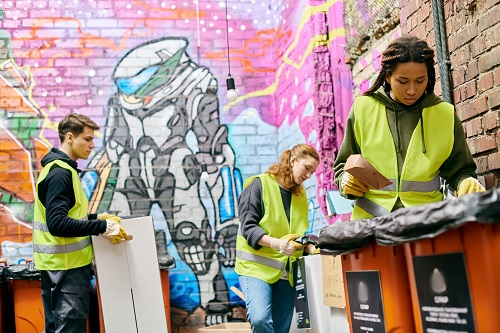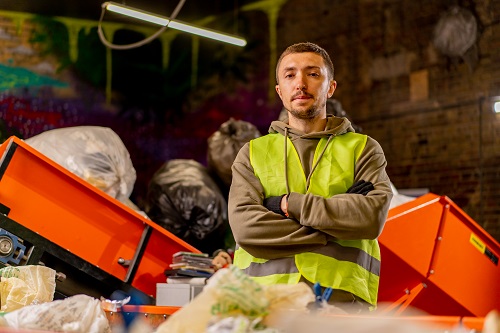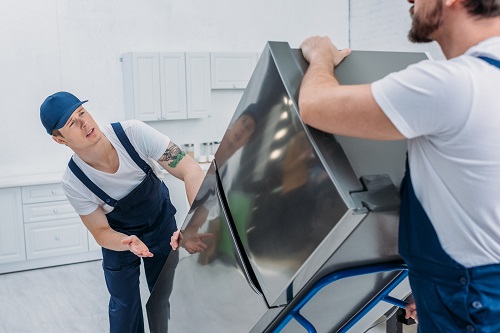Bereavement Cleanouts
Bereavement cleanouts are sorting and clearing a home following a loved one’s death. A lot of people have to face personal belongings, furniture, and everyday stuff. It tends to stir up deep emotions and fundamental decisions about what to hold on to or release.
It is useful to have some good guidelines and advice for a simple and gentle process. The following sections provide some practical tips for handling these cleanouts with sensitivity.
GET A FREE ESTIMATE
What will it cost for us to remove your junk and take it to a disposal site? We would love to provide you with an approximation of the final price. All you have to do is give us some information about the cleanout or demolition project you have in mind. Please fill out the nearby form.
The Emotional Reality
There’s an emotional reality to bereavement cleanouts that can sometimes run well beyond the tangible reality of clearing a room. Going through decades of stuff has the potential to reawaken old grief — even for friends and family who appeared rock solid after a funeral. This can evoke nostalgia, loss, and stress all at once.
Your family will have their own grief in different forms that will arise at unpredictable times. The emotional work needed is hard, and you have to come to terms with the fact that recovery is slow and unpredictable. Such small breaks of self-care and love can manage the emotional tide that accompanies each stride.

Acknowledge Grief
Make sure you validate your emotions and those of all participants. Emotionally, it’s a mixed bag. Some will be sad, others frustrated, and others numb. This difference is typical.
When family members discuss openly what they’re going through, it promotes empathy and assistance. The cleanout process can magnify family dynamics, occasionally mending old divisions but more often re-aggravating old scars. Anywhere that you give people an opportunity to talk, listen, and be heard is a very long way.
Incorporating something as simple as journaling or sharing stories about the deceased as you sift through items can pay tribute to their memory and make the experience far more poignant. Even a humble memory spoken out loud can lighten the mood and bring back to everyone the joy, not just the sadness.
These types of gestures can help everyone feel seen and respected, minimizing the likelihood of any confusion.
Manage Overwhelm
The emotional reality of estate cleanouts overwhelms a lot of people. This task-busting approach keeps stress in check. For instance, you concentrate on ‘one room or one set of belongings’ at a time.
Establish achievable daily objectives—perhaps it’s tackling a single box or clearing a shelf—so that advancement remains tangible. A comprehensive checklist can help organize the process:
Inventory each room.
List items to keep, donate, or discard.
Track who is responsible for each task.
Note sentimental items that require group decisions.
Breaks, be it a stroll or a cuppa, allow you to reset, physically and emotionally. Nothing exhausts and encourages second-guessing during these tasks like not pacing yourself.
Seek Support
No one ought to bear the full weight by himself. Seek assistance from friends or relatives, particularly if you observe imbalanced tasks. Relying on support keeps resentment and burnout at bay. This is the kind that occurs when one person carries the brunt of the load.
Sources of support can include:
Extended family members
Trusted friends
Religious or community leaders
Support groups (in-person or online)
Professional organizers
Hiring professional bereavement cleanout services can relieve you of some physical and emotional strain, particularly in situations where decision fatigue becomes too much, too soon. Sometimes you need a grief counselor or coach for personalized support, assisting you in navigating emotions and establishing boundaries along the way.
Essential First Steps
For beginning a bereavement cleanout, clear steps direct your practical and emotional needs. The process can be overwhelming, but organizing it provides clarity. Try to leave room to breathe on the memories while living in the ‘need to do’.
Establishing a timeline and breaking the work into manageable, smaller daily or weekly goals keeps the momentum going and prevents burnout. Include all stakeholders to be respectful and efficient.
Secure Property
Locking down the estate is step one. Change locks or add additional security, particularly if keys were distributed to multiple individuals. This keeps pirates out and treasures safe in the cleanout.
Go through the home to look for any maintenance issues such as leaks, broken windows or electrical hazards. Addressing these initial issues maintains a safe space for all. Be sure utilities like electricity and water are on for cleaning, sorting and visits.
If the property is unoccupied for extended periods, it may be worth investing in professional security services, particularly in break-in prone regions.
Locate Documents
Collect everything you’ll need before you move or trash anything. Seek out wills, property deeds, insurance policies, bank statements, and tax returns. They’re probably sitting in your desk, safe, or filing cabinet.
Categorize what you discover into folders—legal, financial, personal—for simpler review down the line. For instance, visiting with an estate attorney can illuminate what paperwork is needed for probate or inheritance claims.
Copy important documents and place them in a locked box so they don’t get lost or stolen in the current cleanout. Filho as you go cuts down on later stress. Start with the most probable locations and then test less likely ones.
Maintain a list of necessary documents to measure your advancements. Never throw away papers you aren’t certain about without legal advice.
Communicate Plan
Communicate your cleanout plan to all close family and stakeholders. Map out the timeline, describe how responsibility will be shared and set expectations from the start. Designate roles, such as who will sort personal stuff, who will take care of donations, and who will liaise with the experts.
Keep everyone posted on progress. Use group messages or shared documents to maintain open communication. Get your family members to speak up about their desires and their worries.
This prevents miscommunication and can build collaboration. In conflict, a neutral third party might decide. This can be a family friend or professional like a counselor. Transparency and communication at every step build trust and make everyone feel a part of the process.
The Cleanout Process
Bereavement cleanouts frequently require planning, patience, and clarity of steps. Putting a loved one’s house in order can stir up profound memories. It requires a combination of sympathy and system. A good process guides families through what can be a complicated and emotional undertaking.
1. Assemble Your Team
Bring together a small group of trusted individuals, family or friends, who get the emotional significance of the cleanout. Not everybody has to be involved in all stages. Other times, one or two steady helpers is all you need. Some families hire a cleanout company.
These professionals provide impartial advice and can be useful when the family has difficulty deciding as a group what to hold onto, donate, or discard. Delegate according to each person’s strengths. For instance, have your clean-freak work with the paperwork while the rest of you sort or box up.
Get everybody talking. Busy days can be stressful, so check in frequently and remind your team to step away for a moment.
2. Establish a Timeline
Define a bright-line start and end date for the project. Divide the work into daily goals that keep everyone on track. Other families like to keep work sessions short, about two hours, so they don’t get burnt out.
If energy or emotions sag, modify the plan. Keeping the timeline in view, perhaps on a shared calendar, keeps the team aligned.
3. Create a Sorting System
Establish an easy triage system with bins or boxes labeled ‘keep’, ‘donate’, ‘sell’ and ‘trash’. You may include categories such as ‘save for another family member’ to honor varying family desires.
A checklist makes sure no room or closet gets skipped. Include everybody in the decision-making, as each piece could mean a lot to someone. Box labeling as you go saves time and keeps it clear when your house fills with loot.
4. Work Room by Room
Proceed one room at a time. Begin in simple spaces, such as a guest room, to feel a sense of accomplishment. Reserve the hard spaces for last.
Try to restrict how many people are working in each room to mitigate emotions. As you do this, record valuable and sentimental items in a notebook or phone. Once you’ve emptied a room, clean it out quickly before moving on.
This method prevents the process from feeling overwhelming and allows you to measure your progression.
5. Finalize Distribution
Finally, determine who receives what, ensuring everyone’s input is considered. Tag or list items for donation or sale. Call local charities for pick-up and ask for a receipt, which can offset cleanout costs.
Schedule final pick-up or drop-off dates. When everyone in the family feels included, the conclusion seems more dignified. Stash crucial papers, such as legal and financial documents, in a secure location throughout.
Navigating Belongings
Going through a loved one’s stuff after a death can seem overwhelming. They’re typically intermixed with memories and significance, so it can be a very personal process. Respecting the relationship between person and place is crucial.
Before you dive in, it’s smart to collect important papers such as wills, deeds, and financial accounts so you don’t lose anything critical. Constructing a small army of family or trusted friends and establishing a realistic timeframe can alleviate short-term overload and promote decisive decision-making.
Many find it helpful to divide items into four groups: keep, donate, sell, or discard. Bringing in a neutral party can help balance the feelings and the practicality.
Sentimental Items
Sentimental belongings can be the most difficult to navigate. These could be letters, photos, handmade gifts, and heirlooms, all attached to particular memories. Facilitating open family discussions around what these items represent can help everyone feel heard.
Every once in a while, a quick tale told about a necklace or an old book provides clarity. Putting together a memory box or scrapbook with significant mementos allows family to maintain memories without keeping it all. It’s this approach that maintains the spirit while purging the junk.
Family tastes count. Navigate belongings; if a cousin is dead set on holding onto a certain painting, honor that desire. A neutral third party can help you manage disputes and keep the process flowing.
Valuable Items
Certain possessions can have direct financial value, such as antiques, jewelry, rare books, or collectibles. Begin by determining what could be worth something, which could signify checking for maker’s marks, doing online research, or talking to experts.
For example, a painting from the early 20th century might require an expert’s valuation. Local estate sale companies can help with selling off higher-value goods, helping alleviate some stress for the family.
Meticulously record these—photograph, describe, and archive for insurance or estate purposes. Open communication is key. Having the conversation about how to divvy up or sell valuable items ahead of time gets everyone on the same page and minimizes friction later.
Everyday Items
The majority of stuff tends to be general life-type stuff, including clothing, pots and pans, bedding, books, and small appliances. They might not be hugely valuable, but they can still be handy or sentimental.
By working through one room or one type of item at a time, you’ll make sorting manageable. Have family come take whatever they want or can use. Things that are in good shape and usable can be donated to local charities or shelters, giving back to others.
Space it out. Broken or unusable things need to be thrown away. Small steps create momentum and make the process less overwhelming.
The Digital Legacy
Handling someone’s digital legacy is now a major component of bereavement cleanouts. Digital assets like social media profiles, cloud drives, emails, and digital photos can be emotionally and practically valuable to those left behind. With our digital lives expanding, there is an increasing necessity for transparent measures in managing these assets thoughtfully and respectfully.
Digital legacy enhances how individuals engage with and utilize these archives, providing increased utility and occasionally encouraging families to capture memories in novel manners. As generative AI progresses, legacy agents can now impersonate human interaction, presenting new options and challenges for families regarding continued bonds, healing, and the delicate balance between remembering and moving on.
Online Accounts
Begin with an inventory of online accounts and subscriptions. This could be email, music, video streaming, social media, shopping, or cloud storage. Use tools or dig into old emails to uncover forgotten accounts or subscriptions.
Have all passwords and access details stored in a safe and orderly manner, such as a password manager or a note in a locked box. Reach out to each provider to either secure, transfer, or memorialize accounts. Certain platforms, such as social media, provide the ability to convert profiles into memorial pages, preserving memories for friends and family.
If you have accounts tied to payments, be sure to cancel subscriptions to prevent additional fees. Family preferences vary; some may want to keep accounts for memory, while others may want to delete them for privacy or closure.
Digital Photos
Our digital pictures require curation. Organize them by year, event, or individual, allowing others to easily locate those special times. It can be a time-consuming process, but it keeps memories alive for generations to come and gives families something to bond over and celebrate their history.
Once sorted, backup these files to cloud storage or an external drive. This protects them from device crash or loss. Others make digital albums or slideshows with tools that easily share with loved ones. Posting these digital memories for the family to share potentially connects families across geographic distance.
Personal Files
Go through all of your personal files such as papers, correspondence, and sensitive records. Organize these into what needs to be retained, what can be distributed, and what needs to be eliminated. Shred or digitally delete when you’re disposing of private items.
Prepare the leftover files, well-marked for other family members to find. Let us know what files matter most, such as wills, contracts, or even personal notes, so they don’t get lost in the ether. Others might be more valuable to specific individuals. Discuss with family to determine what to save.
Professional Assistance
Loss cleanouts are heartbreaking and problematic. It can be time-consuming, exhausting, and a delicate dance with your belongings and memories. A number of individuals find it beneficial to hire professional cleanouts, particularly if they are dealing with complicated estates, time constraints, or physical challenges.
Professionals do more than handle logistics; they provide direction, support, and compassion for difficult circumstances, allowing you to concentrate on your mourning and recovery.
When to Hire
When to seek professional help depends on a variety of factors. If the job feels overwhelming to begin or complete on your own, or there are health or safety concerns involved, such as biohazards or hoarding, it’s smart to enlist professionals.
For estates that are either high volume or multi-location, this process can often go beyond the time or capability of individuals, particularly individuals with work, family, or other obligations.
Some symptoms that it’s time to hire help are that you’re stuck, overwhelmed, or can’t decide what to keep, donate, or toss. If the emotional burden of sifting through a family member’s items becomes overwhelming or if special disposal is required, professionals intervene with expertise and kindness.
What to Expect
Service Type | Key Features | Benefits |
|---|---|---|
Standard Cleanout | Sorting, packing, removal | Reduces clutter, saves time, less stress |
Biohazard Cleanup | Specialized equipment, trained staff | Safe handling of hazardous materials |
Hoarding Cleanup | Compassionate, step-by-step process | Restores space, addresses complex situations |
Valuation Services | Appraisal of assets | Ensures valuables are handled with care |
Donation Coordination | Manages donations | Simplifies giving away useful items |
Anticipate a professional team coming out to survey the estate initially, examine the scope of work and recommend a plan. They typically give a time frame, a quote, which varies based on project size, location and services, and explain what is included, like donation drop off or hazardous waste.
Most teams are coached to be empathetic and treat your belongings with respect and keep you informed throughout.
How to Choose
Begin your search for qualified, professional grief cleanouts in your area. Compare their qualifications, services and management of delicate situations.
Search for highly-rated businesses that are upfront about their pricing and have a defined method for dealing with valuables and keepsakes. Get personal recommendations if you can, then contact them to arrange consultations.
At these meetings, talk about your requirements, inquire about their methodology, and note their professionalism and insight. Focus on teams that are transparent, respectful of your situation, and provide client references.
Respectable firms are upfront about their expertise and preparation, particularly for difficult or toxic cleanouts.
Conclusion
It can feel tough going through a loved one’s belongings after loss. Everything, from sorting through photos to clearing out clothes, stirs up memories. Though the work could be slow, those small victories provide tangible evidence of real forward movement. Others take solace in working with a trusted friend or custom cleanout crew. Some prefer to proceed one box at a time. Keep in mind, you can’t do this the ‘right’ way. To help make it go smoother, use checklists, set small goals, and enlist assistance when you need it. Clear plans and honest talk can take the stress out. Want to know about smart tools and cleanout support? If nothing else, peek at our guides and drop us a line. No one has to do this hard work alone.
bereavement cleanout SERVICES
Let the JUNKWISELY team take the stress out of your bereavement cleanout .We are dedicated to delivering not just a service, but a solution, allowing you to focus on what’s next. Experience the ease and satisfaction of a professionally handled cleanout by choosing JUNKWISELY.

UPFRONT PRICING
We don’t beat around the bush when it comes tojunk removal prices . At the beginning of your appointment, we’ll be able to calculate the final cost of our servicesjunk removal prices.That way, you’ll be able to know what you’ll owe us from the start. Why wait until later?

PROFESSIONAL SERVICE
You’ll be glad that you chose JUNKWISELY because our crew delivers a truly professional image. It’s because of our clean uniforms, smiling faces, and good work ethic that we’ve been able to meet the needs of so many clients before you.

ATTENTION TO DETAIL
Not only will we Remove your appliance with ease, but we’ll also sweep up behind ourselves so that you don’t have to deal with whatever mess was hiding beneath it. We’ll do whatever it takes to ensure your complete satisfaction because you deserve it! .
SAVE $20 WHEN YOU
BOOK ONLINE
No need to delay your appointment. Schedule with us online, and you can save twenty dollars.

READY TO SERVE YOU
Whether you need us to get rid of a refrigerator, freezer, washing machine, or dryer, we’re ready to get to work. All you have to do is book an appointment. Use either of the buttons below to get in touch with us. We’re looking forward to meeting you!




